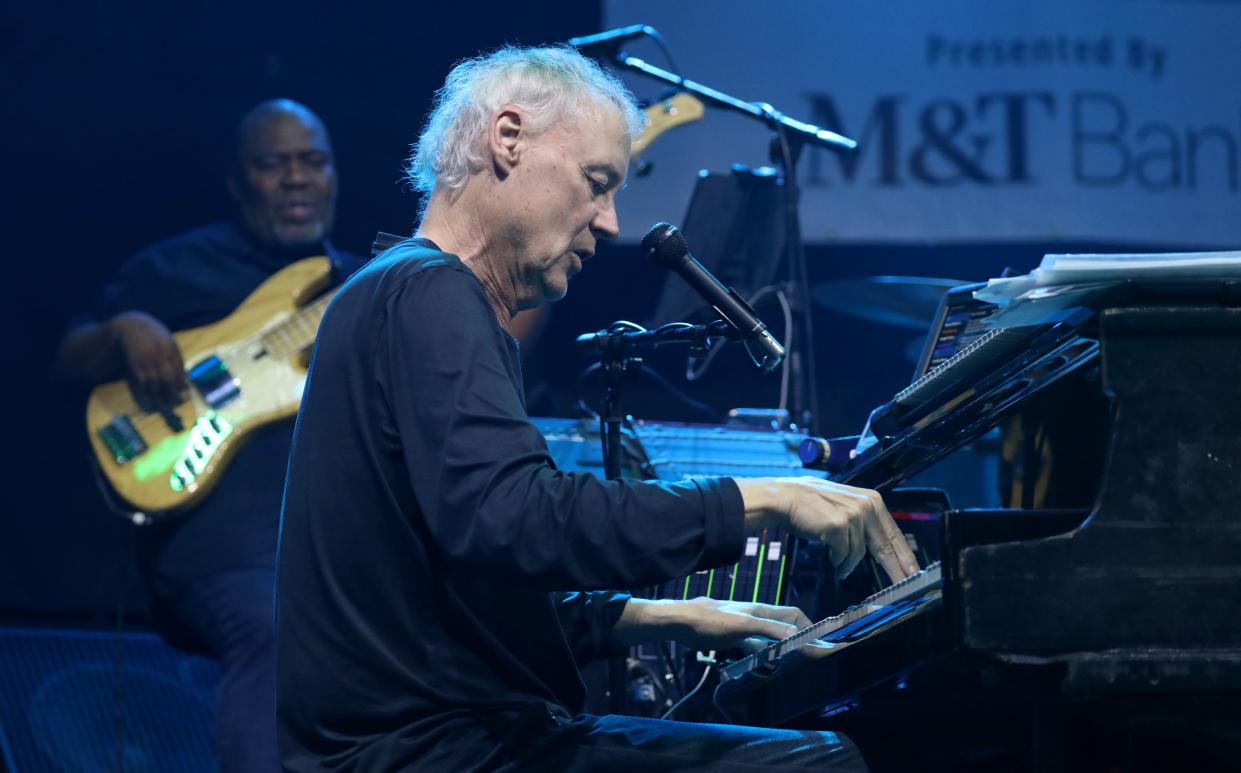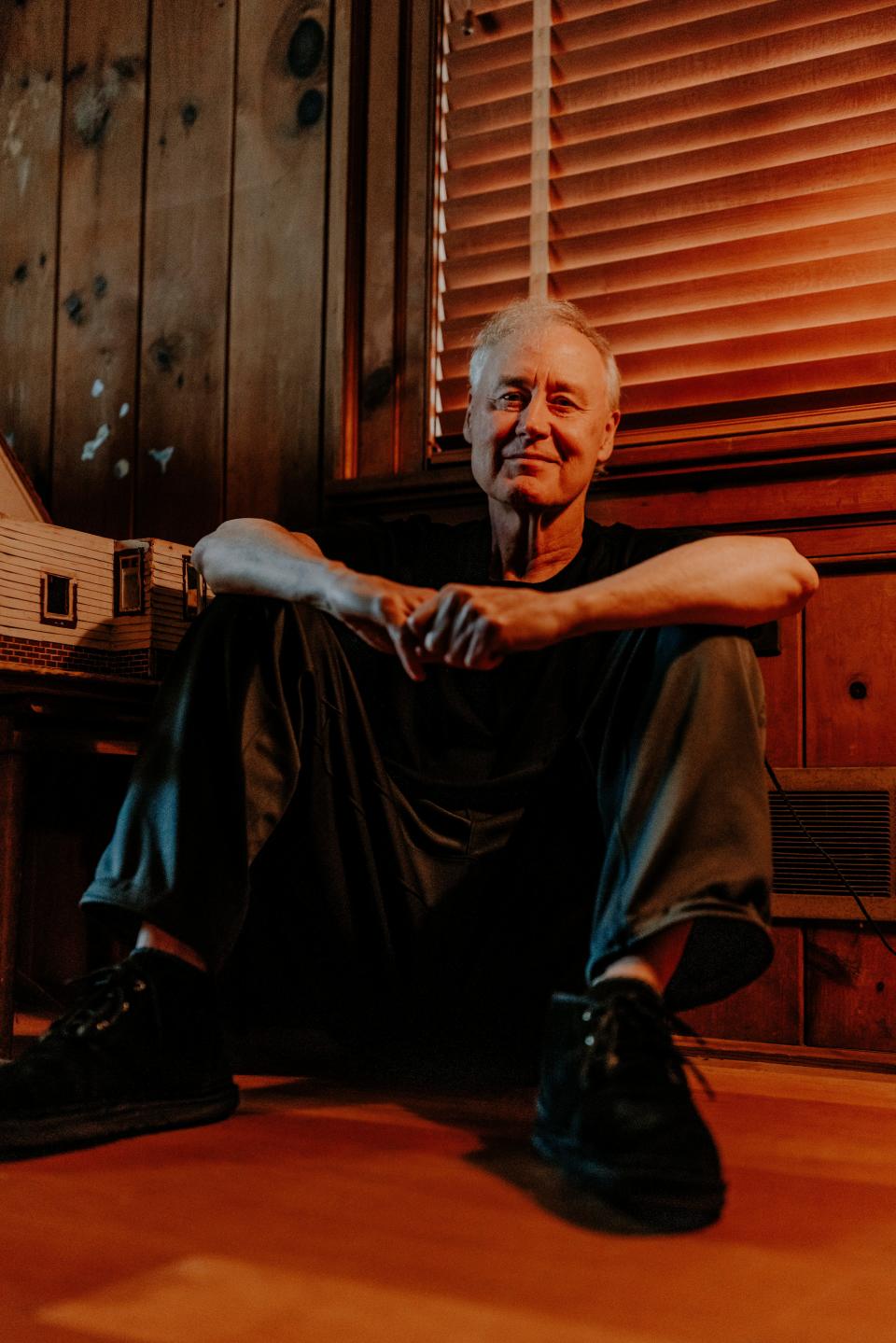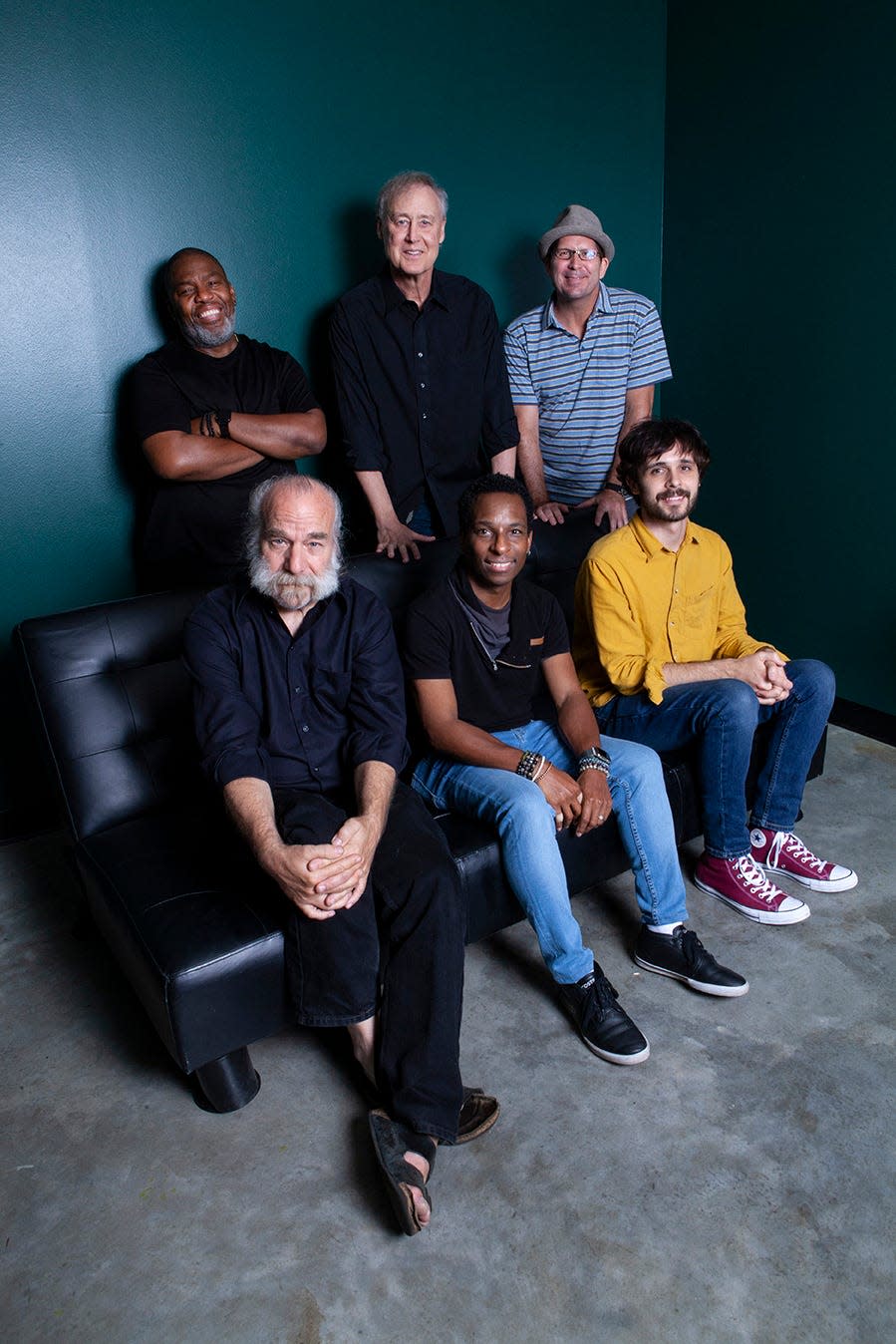Q&A: Bruce Hornsby celebrating re-release of his 'best record' ahead of Evansville show

- Oops!Something went wrong.Please try again later.
- Oops!Something went wrong.Please try again later.
- Oops!Something went wrong.Please try again later.
EVANSVILLE – Bruce Hornsby has marked a lot of huge milestones in his career.
The singer-songwriter and virtuosic pianist has won multiple Grammys, played with legends like Bob Dylan, The Grateful Dead and his piano-playing hero Elton John, and had huge hits such as "The Way It Is" and "Mandolin Rain."
But this year marks one of the biggest yet: the 25th anniversary of "Spirit Trail" – the 1998 double album that many of his fans to be the best work he's ever done.
To celebrate, he'll unveil a box-set reissue on Oct. 27 that includes live cuts and previously unreleased material. He's also embarked on a tour that will carry him all across the United States – one of those stops will be at Evansville's Victory Theatre on Tuesday, Sept. 12. Each ticket will include a CD copy of the reissue.
Ahead of the show, Hornsby got on the phone with the Courier & Press to discuss his beloved album, the possibility of James Taylor playing metal, and the death of his collaborator and friend, Robbie Robertson.
The discussion has been edited for length and clarity.

It’s Sprit Trail’s 25th anniversary. It covers so many of the genres you’ve delved in and out of over the years. How do you feel about it a quarter-century on?
Hopefully it’s slightly obvious how I feel about it (laughs). If I didn’t feel good about it, I wouldn’t be shining a light on it 25 years later.
It holds up to me. I still find it very listenable on so many levels. I’ve said this a lot over the years, and most people don’t understand it really, but I’m really not a fan of the first two records – the really commercially successful ones. Mostly because I’m not a fan of that singer. “Spirit Trail” was different. It’s several years after that. You can call me a slow learner. I felt like I finally found a place that was sort of right.
It felt like “I like this guy.” I like the guy singing on “Sprit Trail” way more than I like the guy singing on “Scenes from the Southside” and “The Way It Is.”
But also we’re putting it out the general consensus among my real, true, hardcore fans who have followed me through this stylistically disparate journey … for them the consensus is this is the best record.
When you say you don’t like that guy on the first two records, why do you think that is?
Let me be specific: I don’t like the singer. Those songs (on the first two) hold up just fine for me and the piano playing, it’s solid, it’s good. But the singer of those songs – it just feels a little wooden, a little stiff sonically. If you listen to those records and you listen to “Sprit Trail” or many others subsequently, for me it’s pretty clear.
This isn’t a revisionist history thing. I wasn’t too fond of (the early singing) at the time. But that’s an article about those records. Not “Spirit Trail.”
You’ve been playing the songs for 25 years. In concert sometimes you’ve elongated or changed them. I know you played with The Grateful Dead for a quite awhile and you’ve recorded with Bob Dylan, two acts notorious for changing their songs as time goes on. How have the songs changed for you over the years?
Do you have part of the reissue called “Live Trail?"
I just listened to the original record.
Oh, you need to listen to the remastered version (on the new three-disc reissue). It’s a whole different thing.
… There’s a separate (section) called “Live Trail” which chronicles exactly what you’re asking about: the evolution of the song. I’m a fairly restless musical soul and so I’m always looking to make the music evolve and grow. Some of the songs have really flowered since ’98.
The first example is a song called “Funhouse.” It changed a lot. And really, the core of our live repertoire for many years has come from this record. Because it’s a pretty up-tempo record. It goes straight on down the line. … It’s a record made for live playing.
There are also instrumental pieces on the record. You’ve also composed music for films, including with director Spike Lee. When you sit down to write a song for a record versus a score for a movie, how does the approach differ?
I’ll speak specifically about “Spirit Trail,” because it was different than any other time (writing). When I turned 40 in November 1994, I thought to myself “this is a bit of a life crossroads if you want it to be." … Do I want to rest of my musical laurels like most of my singer-songwriter friends have done where generally they make stylistically very similar records to ones they’ve made before? Of course longtime fans love that, because they don’t want people to change. People who love James Taylor, they don’t want him to make a blues record or a metal record.

A James Taylor metal record would be great.
I’m all for all of that, but I’m in the vast minority. I’ve never been that guy (to repeat himself). I’ve gotten nasty letters since my second or third record from fans, but I’ve been undeterred (laughs).
I’m interested in pushing myself. So in this case, I had two choices: do I rest on my laurels and ride into the sunset with what I already know, or do I push it and try to deal with some areas of piano playing on a virtuosic level that I’ve never dealt with? (And) I chose the second option and opened a door to this area of piano playing called two-handed independence and really started to deal with that. And it’s very painstaking. It takes a lot of time to really get it.
Consequently, while I’m writing songs, I’m also developing these two-handed patterns. … I learn the pattern, but then I have to learn how to improvise rhythmically very freely over the top of this pattern and keep the pattern really steady. It’s sort of like the old rub your stomach and pat your head.
So a lot of these songs were informed by this new study that I was undertaking regarding the piano.
You’ve also written songs with other famous musicians, one of whom was Robbie Robertson of The Band, who recently died. Can you tell what it was like to work with him?
Working with him was just such a joy. He was a very joyful person. He was one of the great raconteurs. He had 1,000 stories and he loved to tell them and we loved to hear them, because he was so good at it. They were so interesting and noteworthy and gripping.
We had this amazing experience together. We wrote this song (“Go Back to Your Woods”) and we went to New Orleans and recorded it with The Meters, the great New Orleans funk band. Then we went to legendary Bearsville Studios up in Woodstock and finished the record. Then we went back to New Orleans and filmed a music video down there with as many participants as we could.
We went over to Daniel Lanois’ studio – Kingsway – in the French Quarter and worked some more in there with the Wild Magnolias. So I mean, what an experience. We played on “Saturday Night Live.” Then we went to Spain and played on the Guitar Legends festival, so I think you can see what I mean when I say it was such a broad, wonderful experience.
We just stayed friends all the way through. Interestingly enough, relating Robbie with “Spirit Trail,” the solo piano piece “Song C” that precedes the song “Sad Moon,” for some reason Robbie asked me if I had any music. I sent him “Song C” and he called me and said “wow, I want to write a song over this and I’m working on it right now.”
Well, I never heard anything more about it, so I guess he never finished anything. But he was definitely on the case. He was playing it for me over the phone and talking to me about some ideas he had for it, so that would have been fantastic, too.
We texted in January because I was out here (in Los Angeles) working on a record. I told him, “Hey we’re over here at Sound City if you’d like to come by.” He texted me back and said, “Man you’ve caught me at an incredibly busy time, where I’m finishing a movie project for Martin Scorsese, writing this book with this other guy, making this movie with this other guy ..."
It didn’t sound like someone who was struggling with a health issue. So I was really pretty shocked when this happened. That really threw me. But all I know is up to the end, obviously he was totally engaged. And look, that’s a great way to live a life. I feel like I’m the same guy.
This article originally appeared on Evansville Courier & Press: Q&A: Bruce Hornsby celebrating 'best record' ahead of Evansville show

